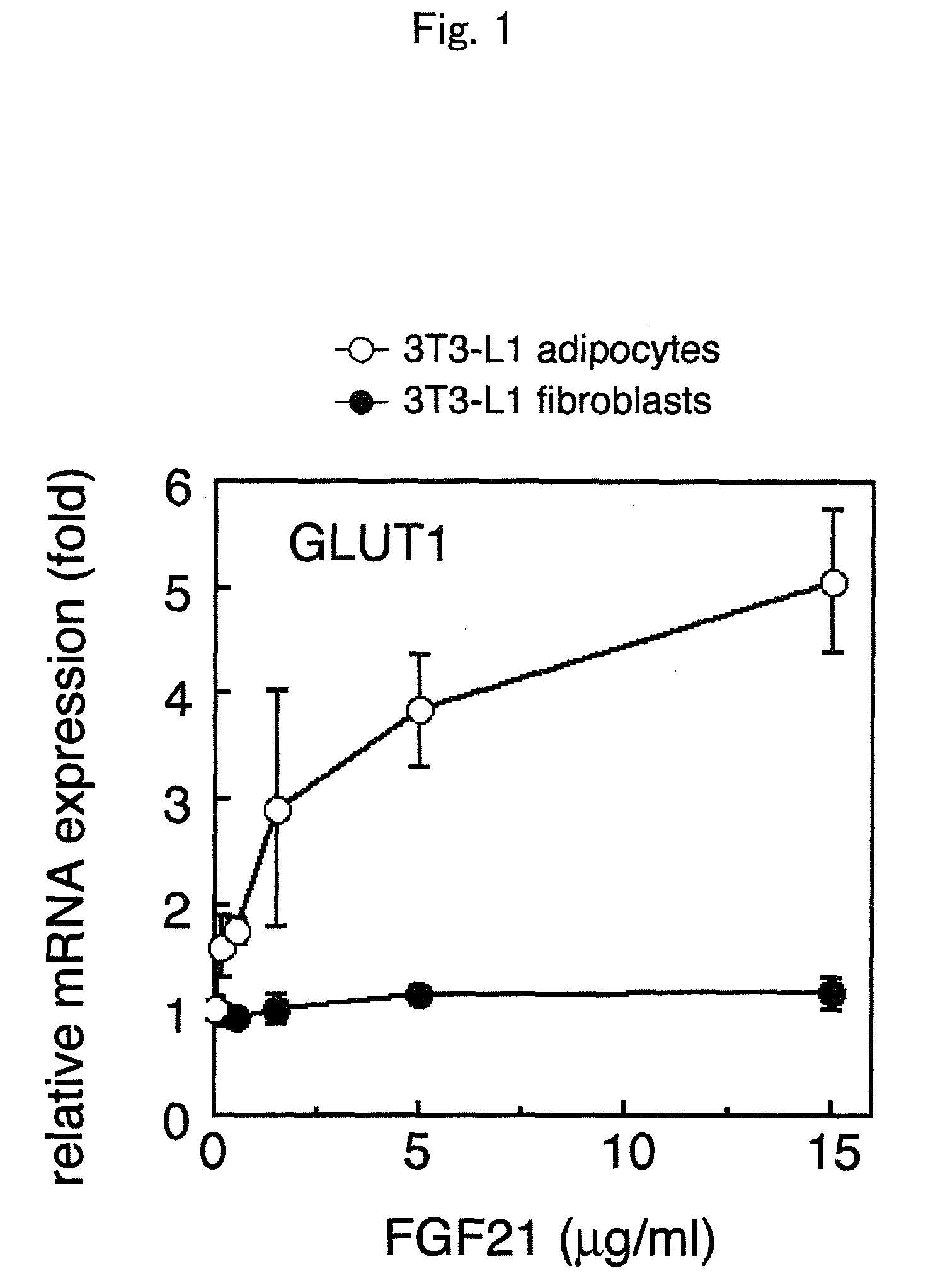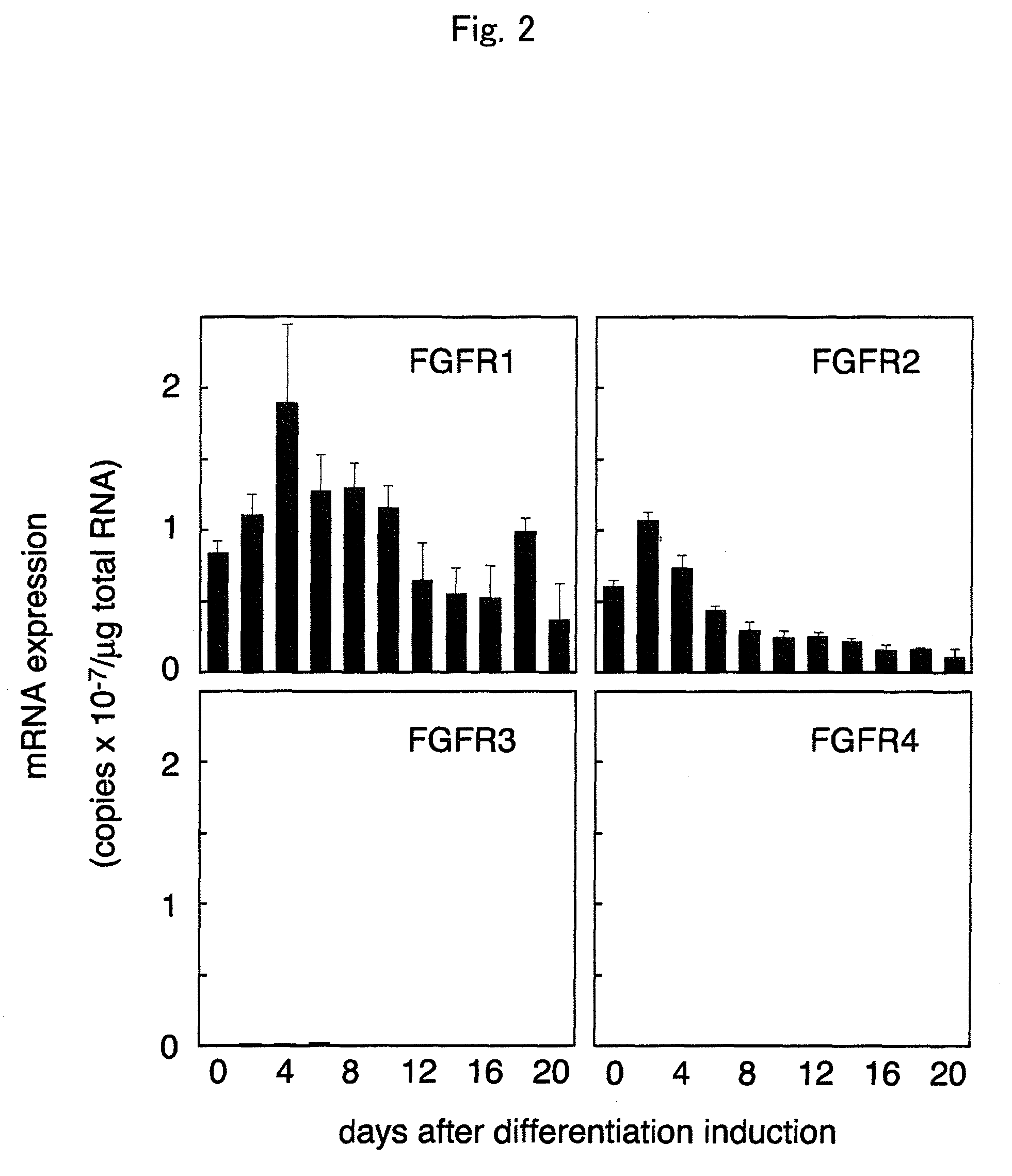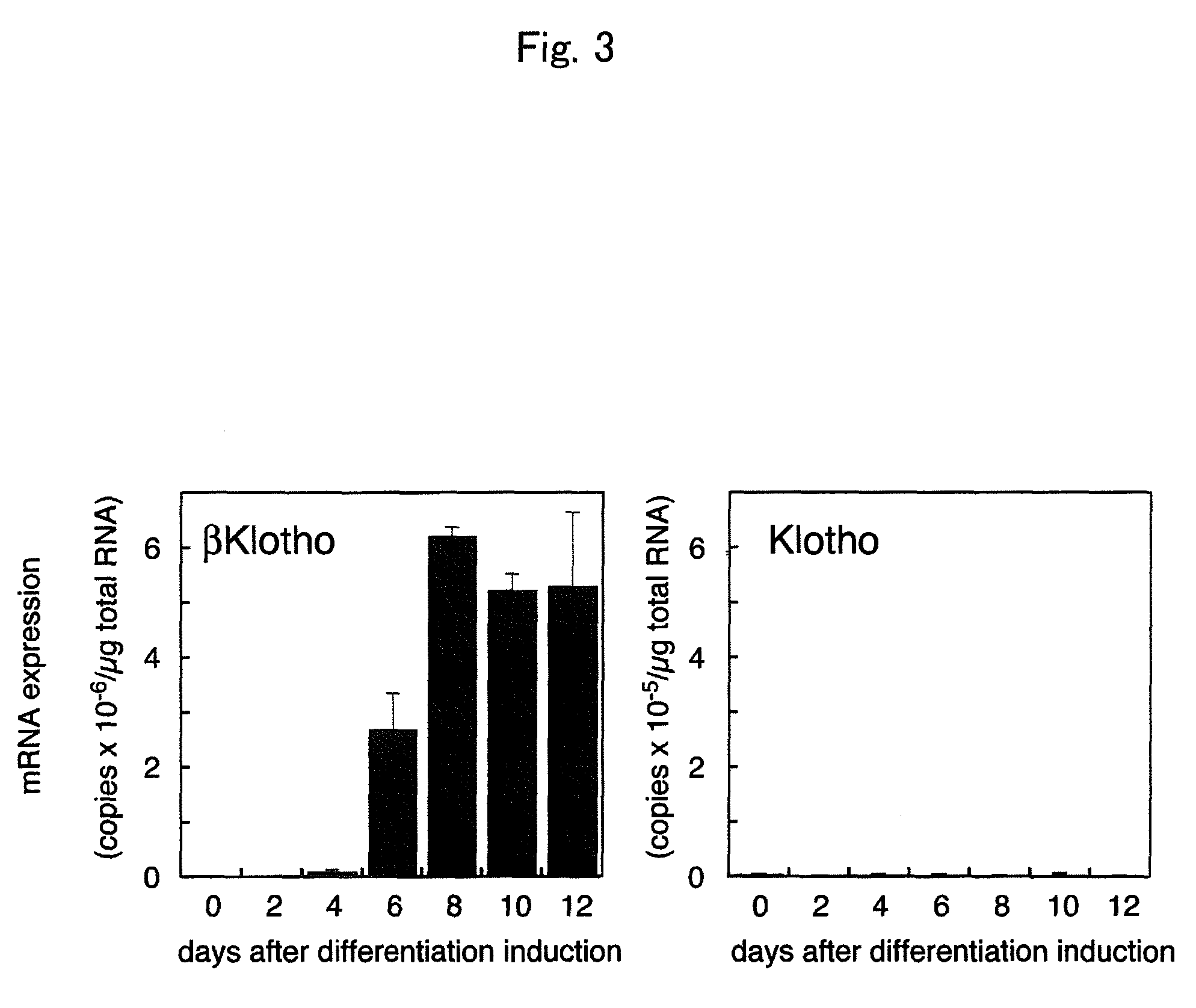Method for screening a test substance for activating a receptor associated with FGF 21 activity
a test substance and receptor technology, applied in the field of screening a test substance for activating a receptor associated with fgf 21 activity, can solve the problems of not being able to say that the mechanism of action of these fgf members has been sufficiently clarified, the mechanism of regulating blood glucose level in the body has not yet been clarified, and the glucose level is not decreased, so as to achieve excellent screening system, increase or inhibit the activity of such betaklotho, and improve the effect o
- Summary
- Abstract
- Description
- Claims
- Application Information
AI Technical Summary
Benefits of technology
Problems solved by technology
Method used
Image
Examples
example 1
Detection of Activity of FGF21 Specific to Adipocytes
[0166]It has been reported that FGF21 allows adipocytes to increasingly express glucose transporter 1 (GLUT1). In the present example, as cultured adipocytes, there were used 3T3-L1 cells that are fibroblasts having the ability to differentiate into adipocytes by controlling culture conditions. The cells were cultured in a culture solution of a Dulbecco's modified Eagle medium (DMEM) containing 10% fetal bovine serum (FBS), so as to prepare cells maintaining an undifferentiated property as fibroblasts. The prepared cells were cultured in a test system, and they were allowed to grow to a confluent state. The cells were then left for 2 days. Thereafter, the culture solution was exchanged with DMEM as a culture solution used for differentiation induction, which comprised 10% FBS, 0.25 μM dexamethasone, 0.5 mM methyl isobutyl xanthine, and 5 μg / ml insulin. The cells were cultured for 2 days. Thereafter, the culture solution was exchan...
example 2
Detection of Fluctuation in Expression of FGF Receptor Associated with Differentiation of Adipocytes
[0169]In the above Example 1, FGF21 exhibited its activity only after 3T3-L1 cells had differentiated into adipocytes. Thus, there was a possibility that, as a result of an increase in the number of FGF receptors existing on the cell surface associated with differentiation of the cells into adipocytes, reactivity with FGF21 increased. Hence, whether or not the expression level of an FGF receptor molecule is changed was first analyzed.
[0170]The culture solution containing 3T3-L1 cells was exchanged with a culture solution for differentiation induction. After initiation of the culture, the cells having the properties of fibroblasts were gradually converted over time to cells having the properties of adipocytes.
[0171]Thus, a differentiation induction treatment was carried out under the same conditions as those of Example 1. Thereafter, 3T3-L1 cells were collected every two days for 20 da...
example 3
Detection of Fluctuation in Expression of BetaKlotho Associated with Differentiation of Adipocytes
[0172]The present inventors have considered that, if there is a substance whose expression level on the surface of an adipocyte is increased during the process of cell differentiation into the adipocyte, such substance is highly likely to act on an FGF receptor in cooperation with FGF21. The inventors have focused on betaKlotho that had been known to be expressed in the adipose tissue of a developing mouse fetus.
[0173]The expression level of betaKlotho was analyzed over time in the process of differentiation of a 3T3-L1 cell into an adipocyte in the same manner as that described above in Example 2.
[0174]Furthermore, for comparison, the expression level of Klotho, which had been currently reported to act as a co-receptor on FGF23, was also analyzed. Klotho is structurally similar to betaKlotho, and it shows homology of 41% at the amino acid sequence level with betaKlotho (55% at the nucl...
PUM
| Property | Measurement | Unit |
|---|---|---|
| concentrations | aaaaa | aaaaa |
| concentrations | aaaaa | aaaaa |
| molecular weight | aaaaa | aaaaa |
Abstract
Description
Claims
Application Information
 Login to View More
Login to View More - R&D
- Intellectual Property
- Life Sciences
- Materials
- Tech Scout
- Unparalleled Data Quality
- Higher Quality Content
- 60% Fewer Hallucinations
Browse by: Latest US Patents, China's latest patents, Technical Efficacy Thesaurus, Application Domain, Technology Topic, Popular Technical Reports.
© 2025 PatSnap. All rights reserved.Legal|Privacy policy|Modern Slavery Act Transparency Statement|Sitemap|About US| Contact US: help@patsnap.com



